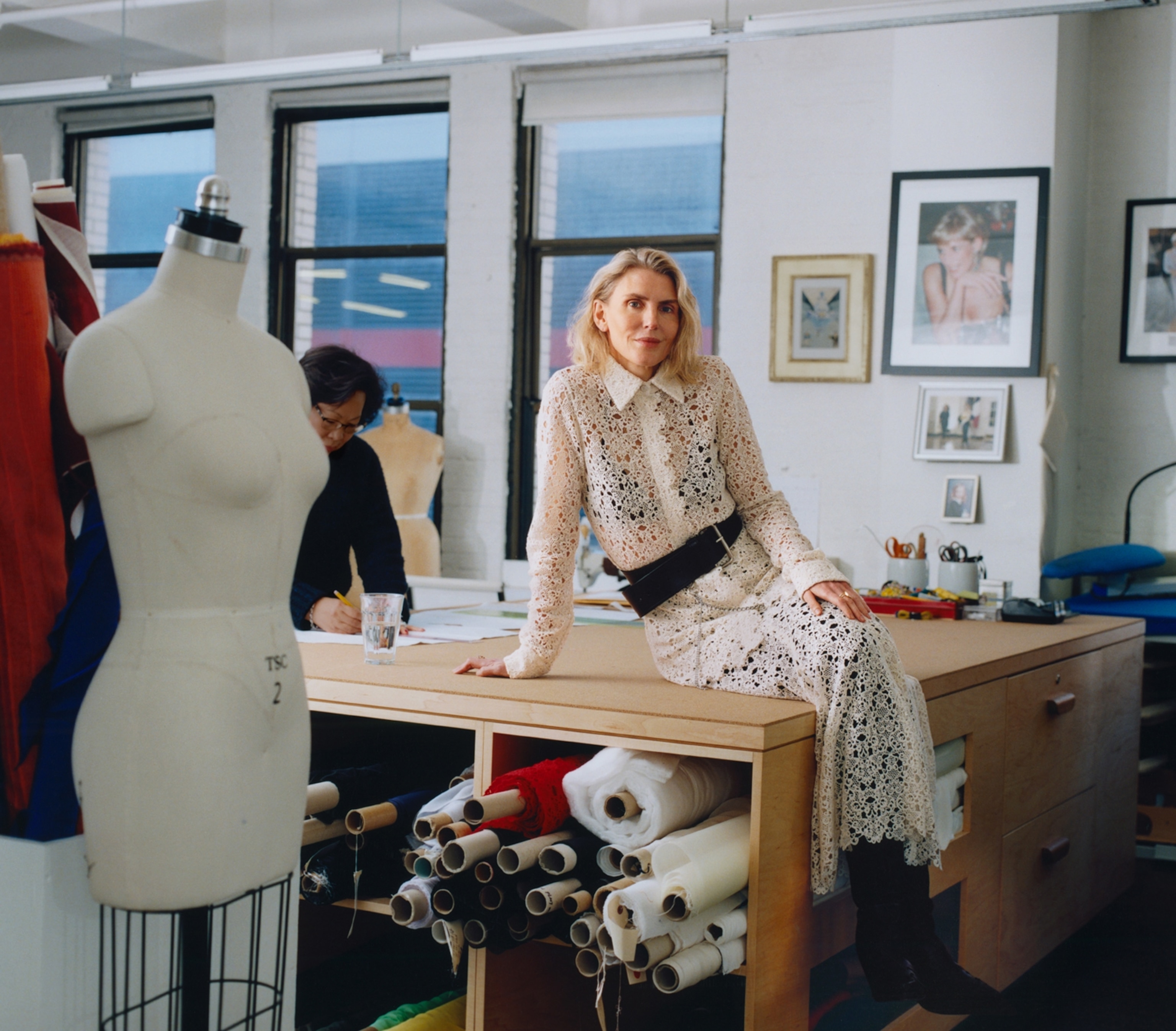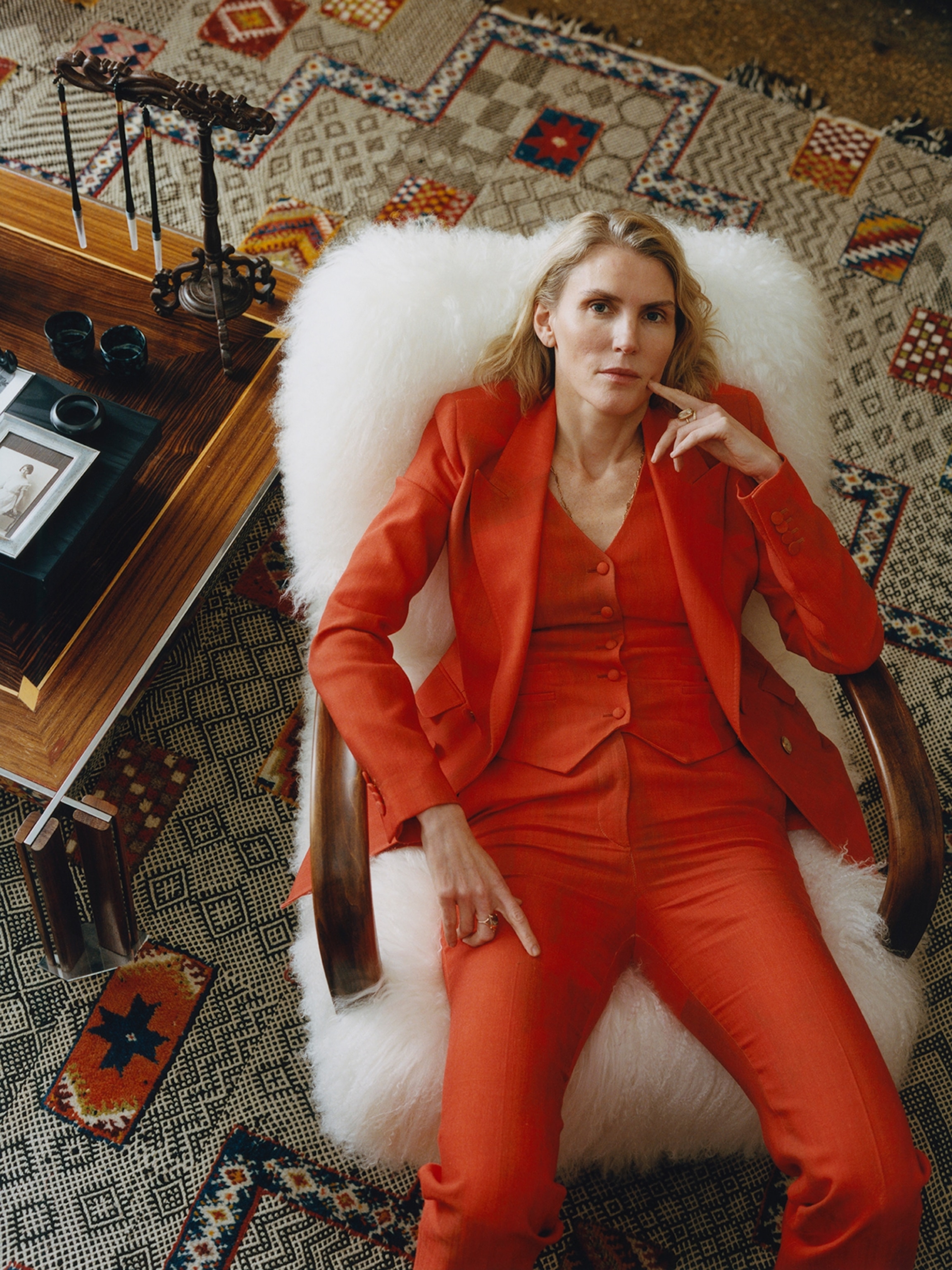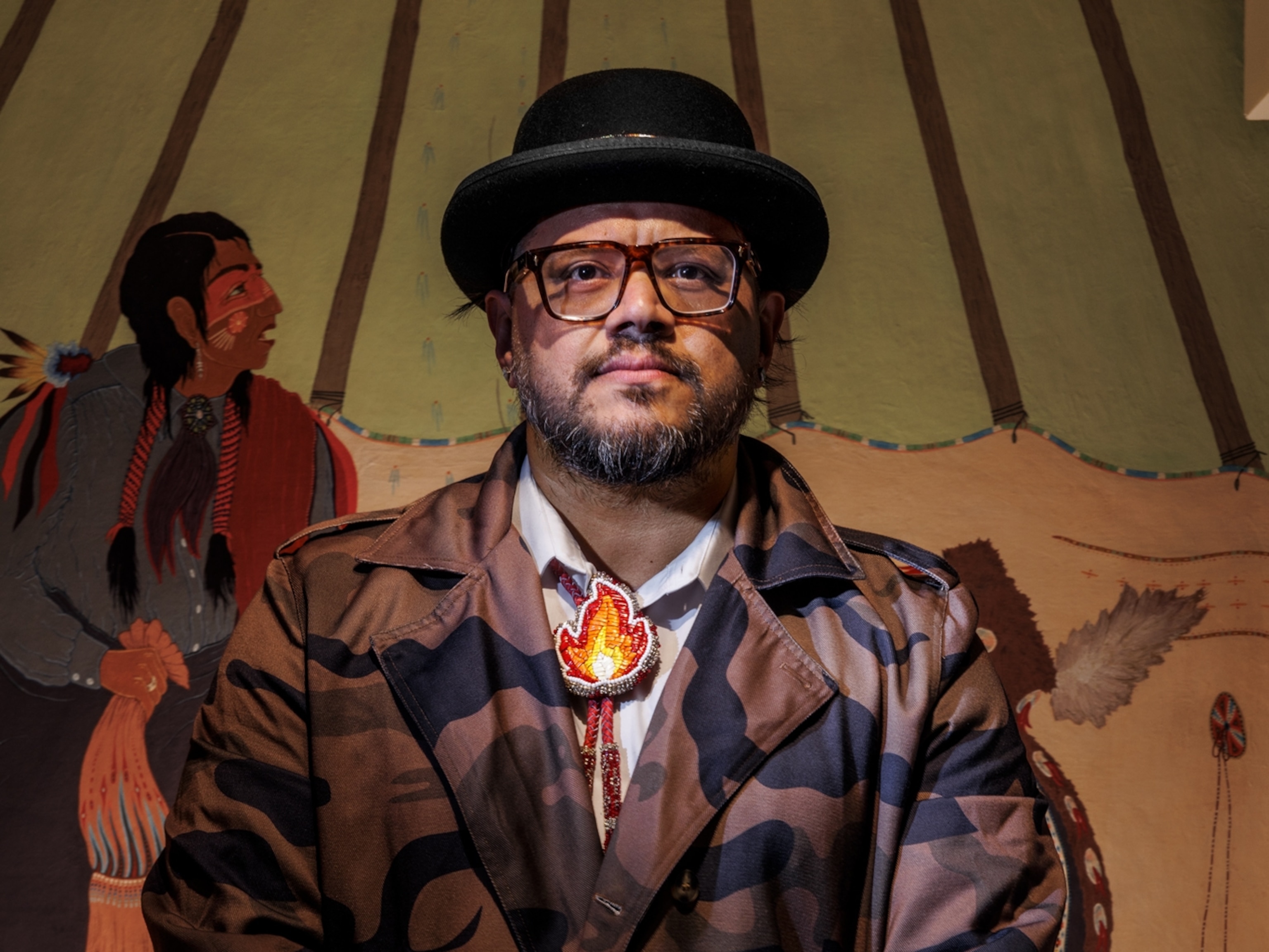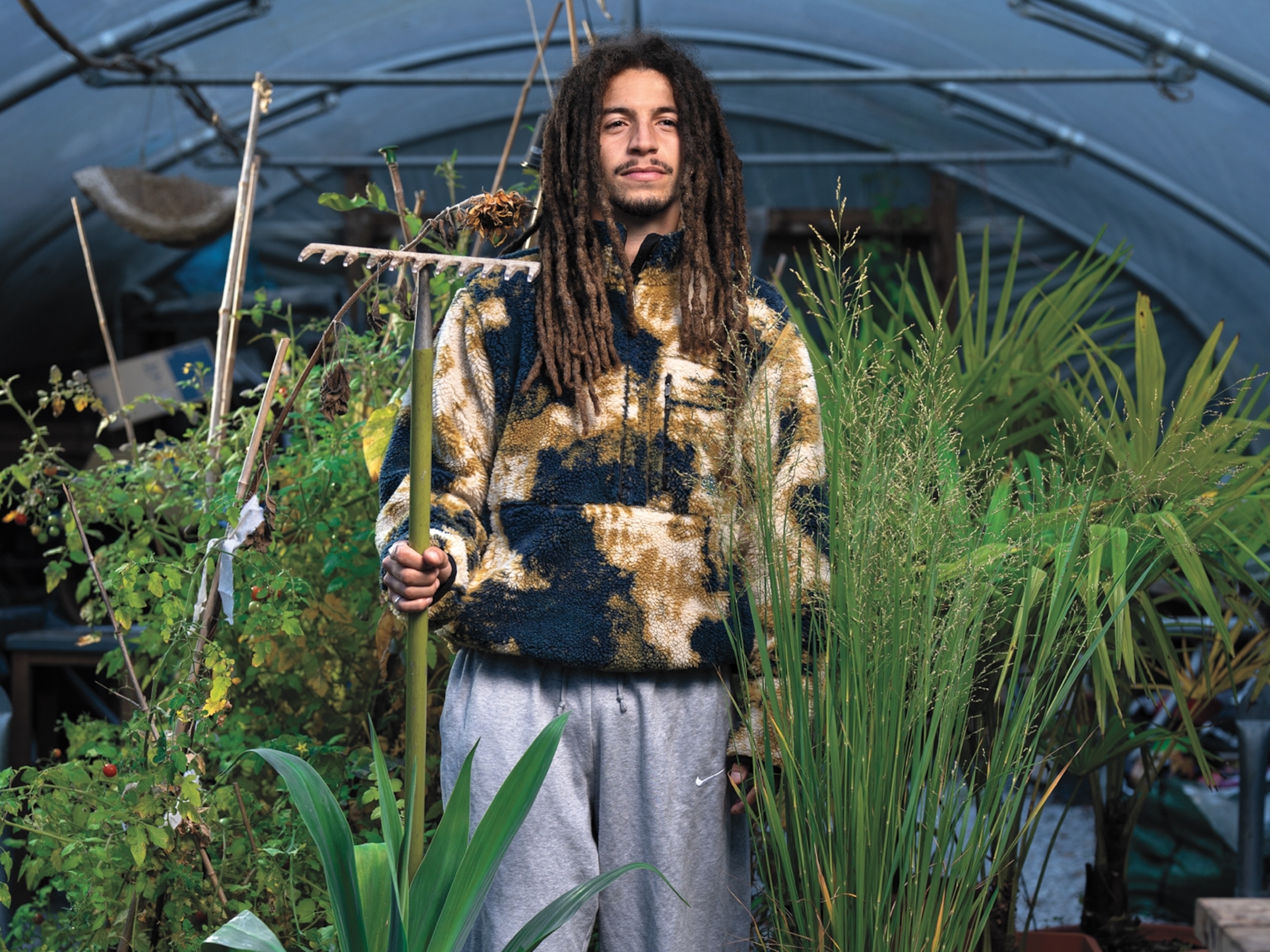Gabriela Hearst keeps pushing the edge of sustainability in fashion
Long before it became trendy in fashion circles, environmentalism was the guiding ethos in the designer’s work. “What am I going to do, another collection based on a ’70s icon?”

A visitor to the Manhattan office of Gabriela Hearst doesn’t need to peruse the impeccably well-made clothes to spot proof of the fashion designer’s impact. “Those recycled cardboard hangers you see?” Hearst says, pointing. “We were one of the first to develop them.” Her abhorrence of the plastic kind owes to its frequent fate: the landfill.
Today the 48-year-old designer—who grew up on a ranch in Uruguay and launched her eponymous brand a decade ago—is a prestige player in the world of fashion and embodies the quiet luxury movement. Even more distinctively, Hearst, who served for three changemaking years atop the Parisian luxury house Chloé, is regarded as perhaps the most climate-conscious designer in fashion. She does more than merely buzzy things like using deadstock fabrics (which she embraces, of course). She uses her position as a business leader to immerse herself in the global climate conversation. In 2023 she spoke at COP28 with environmental and political heavyweights such as U.S. special presidential envoy for climate John Kerry, discussing the promise of fusion energy. Sure, she understands the drape of a sweater, but she might prefer to discuss her (quite nuanced) opinions on alternative energy sources. “What I love about fusion is that it doesn’t use uranium,” she says in one of her characteristically impassioned tangents.
Hearst’s office, like her mind, is overflowing with inspiration, and in the middle of the room sits a giant table stacked with books, journals, tarot cards, and a burning incense stick. Above her desk hangs an oversize framed photograph of her mother riding a horse in Uruguay, a persistent reminder of the upbringing that imbued Hearst with an allegiance to nature and a no-waste approach to daily life. The ranch she grew up on was more than two hours from the nearest city, and she became resourceful and environmentally conscious almost by default. “You can’t just go to a supermarket and buy something, so everything gets repurposed,” she notes. Hearst inherited the ranch more than a decade ago, and when she tried to replace an old water heater, she was met with resistance. “The water tank in the bathroom emits about two minutes of hot water,” she explains. “But my foreman, his answer was like, ‘Let me figure out where we can put this one, before buying a new one.’ There’s a mentality where you can’t just throw things away. There’s not a trash tractor coming and picking up, so you have to deal with your trash.”

Hearst moved to New York City to study in her early 20s and later co-founded a small clothing brand called Candela. She raised the stakes of her design career in 2015 when she launched her eponymous label, a brand so high-end that it drew comparisons to houses like Hermès. As her company grew in size and reputation, questions about environmental impact became more urgent. During a 2017 trip to a drought-afflicted region of Kenya, she found herself confronting the excess of Western consumer culture: “Twenty million people [in east Africa] at the risk of famine, and it was not getting in the news,” she remembers. “They are paying the price for how we’ve been living. That injustice really couldn’t be shut down from my head.” She doubled down on the environmental focus of her work: In 2020, shortly before joining Chloé, she staged the fashion industry’s first ever carbon-neutral runway show.
For most designers, an appointment at a major European fashion house like Chloé represents a pinnacle, but for Hearst, who served as creative director from 2020 to 2023, it was also an experimental opportunity to bring her values to a blue-chip brand. Within a year she helped transform Chloé into a certified B Corp—a company focused on achieving social or environmental objectives, not merely maximizing profits. The brand was the first luxury fashion label to earn the distinction. When Hearst staged her final series of runway shows for Chloé, each was centered around one of the high-concept concerns about “climate success” that animate her: The first was dedicated to the idea of regeneration, the second was focused on energy (fusion, in particular), the third explored the idea of women’s empowerment, and the fourth addressed mindfulness to take action. She grew accustomed to the raised eyebrows and sideways glances that greeted her. “But what am I going to do, another collection based on a ’70s icon? There is a place for escapism and nostalgia and opening Netflix and drinking your matcha latte,” she explains. “But I see hope, and I see information that drives me.”
The gambit was good for business: Hearst managed to increase Chloé’s revenue by 65 percent over her tenure and reduced the company’s losses to zero. She also implemented new packaging at the brand, a move that could appear merely gestural until you consider its ripple effect. “The recycled hangers make me really proud, because people I trained with move onto other jobs. They are now in multibillion-dollar companies, and they are changing the hangers there,” she says.
Now Hearst is refocusing on her own label, finalizing plans for a new Paris store and opening two more in Japan. The stores will follow the same principles that have always epitomized the Gabriela Hearst shopping experience: To minimize excess, she does not invest in digital marketing, nor does she use window displays or mannequins in her stores. This is Hearst’s definition of luxury, and it’s one that is slowly seeping into her consumer’s consciousness. The Gabriela Hearst shopper does not just arrive at the designer brand because they lust after a flawless cashmere coat or an iconic Nina bag. The ideology is beginning to take precedence. “The most rewarding kind of anecdotes,” Hearst says, “are when I hear that clients are buying these really beautiful pieces, and when our retail team tries to wrap them up in this beautiful packaging, they say, ‘No, thank you, because I know Gabi would prefer us not to take the extra packaging.’”






